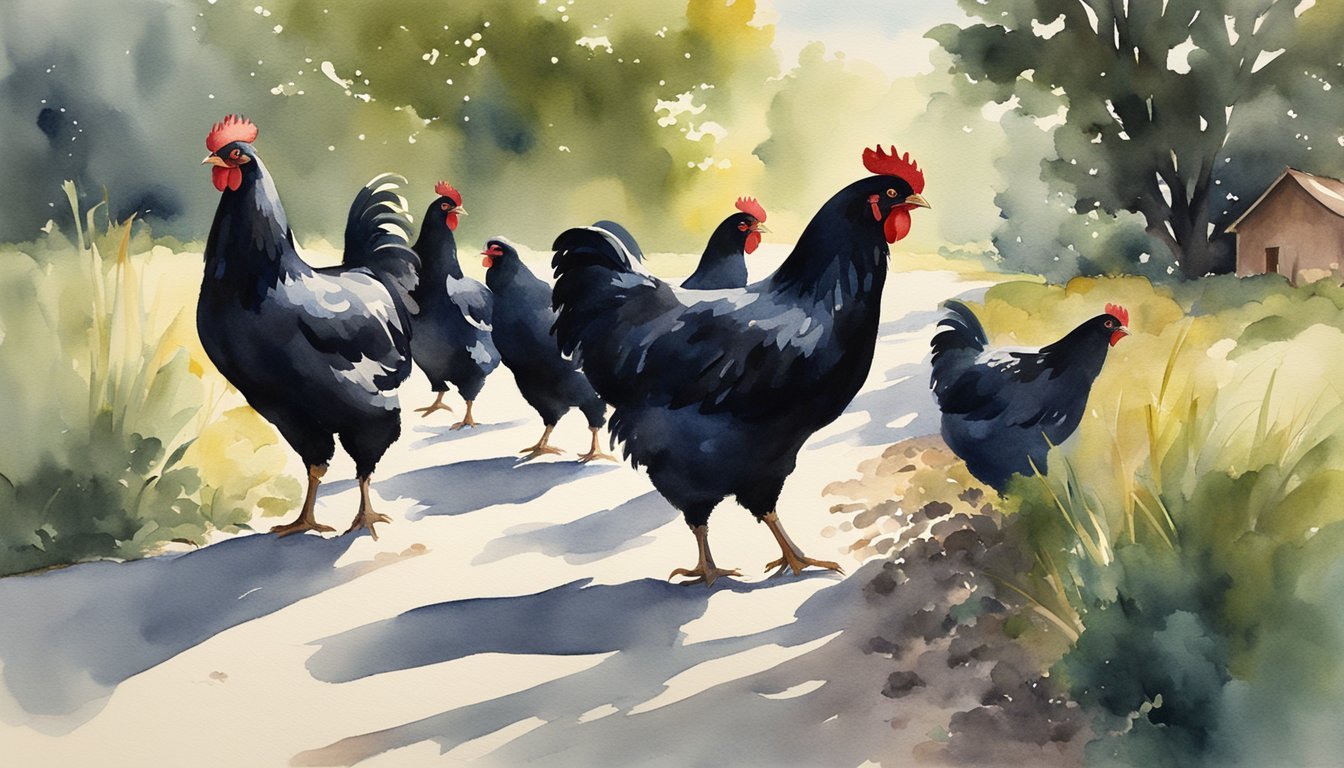Understanding Black Chicken Breeds and Their Unique Traits
Black chicken breeds, known for their distinctive solid black plumage, are a fascinating topic within poultry circles. They are not just striking in appearance; these breeds exhibit a range of physical characteristics and temperaments that make them unique.
Origins and Popularity
Black chicken breeds originate from various parts of the world. The Ayam Cemani chicken, for example, hails from Indonesia and is esteemed for its fibromelanosis condition, which leads to hyperpigmentation resulting in black skin, feathers, and bones. Similarly, the Kadaknath chicken from India, also known for its black meat, is another breed where the pigmentation extends to the internal organs. Breeds such as the Silkie from China, with its fluffy plumage and friendly nature, have been popular in the Far East for centuries and have gained a following in the West for their appeal as show birds and pets.
Physical Characteristics
The physical traits of black chicken breeds are as intriguing as their origins. Alongside the deep black coloration due to melanin, some breeds like the Silkie display feathered feet, while others, such as the Jersey Giant, are known for their large size. There’s also a range in egg production, egg color, and body size. For example, the Swedish Black chicken, or Svart Hona, lays a fair number of small white eggs. In contrast, the Black Australorp chicken is known for its excellent laying capabilities and has been recorded for laying more than 300 eggs in a year. Some breeds like the Silkie and the Cochin have more ornate physical characteristics, such as feathered legs.
Behavioral Traits
Behaviorally, black chicken breeds can range from the docile and friendly to the more independent and skittish. The Ayam Cemani, despite its striking appearance, tends to be quite gentle and easy to handle. The Silkie, well known for being friendly and docile, is often kept as a pet. On the other hand, breeds like the Black Sumatra are known for their active and lively temperament. These traits must always be considered alongside proper care requirements to ensure the well-being of any flock.
Cultural and Practical Significance of Raising Black Chickens

Black chickens hold a unique place in the world of poultry, not only for their distinctive appearance but also for their cultural symbolism and practical benefits. They are celebrated for their contributions to various cultural traditions as well as their utility in egg and meat production.
Egg and Meat Production
Black chicken breeds are known for their egg-laying capabilities. Some breeds, such as the Ayam Cemani or the Silkie, may not be prolific layers of large brown eggs, but they do produce a steady supply of cream-colored or tinted eggs. It is important to note that the egg color from black chickens can range from cream to dark brown, with some breeds even laying white eggs. In terms of meat production, black chickens are appreciated for their flavorful meat, making them a dual-purpose option in many cultures where they might be raised not only for their eggs but also as a meat source.
Health Benefits and Nutritional Value
Black chickens are also sought after for their health benefits. This attribute is particularly notable in some cultures where black chicken meat is believed to have medicinal properties. Additionally, the meat of black chickens is known to be lean and packed with essential nutrients and minerals, which adds to the advantages of raising black chicken breeds.
Black Chickens in Backyard Flocks
In the context of backyard flocks, black chickens are often celebrated for their hardiness and their excellent foraging abilities. These traits make them a practical addition to a backyard flock. They are able to find a significant portion of their food on their own, which can help reduce feed costs. Furthermore, their fluffy appearance often makes them a favorite among poultry enthusiasts, adding aesthetic appeal to the diversity of a flock. Black chickens adapt well to various environments and can be a joy to observe as they exhibit strong social behaviors and integrate with other breeds.

